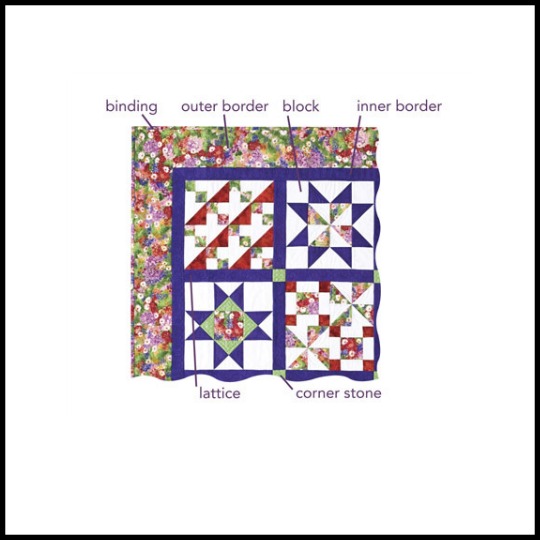Quilting Tips: For Beginners—Anatomy of a Quilt
Posted by The Tech Editors on Oct 27th 2010

As with any first-time venture, it is important that you recognize and understand the key components of your new undertaking.

A quilt is basically a three-layer fabric “sandwich.” The finished quilt top is layered with filler—called batting—and a backing fabric, and the three layers are then secured together with stitching. This stitching may be decorative or strictly utilitarian; in either case, it is called quilting. Finally, the edges of the stitched quilt sandwich are finished with fabric strips, called binding.
A block is a section of the quilt that forms a self-contained design. Some designs are literal, such as stars or pinwheels. Others are more abstract. A block is usually square but it may also be rectangular or any other geometric shape.
Blocks can be separated by lattice strips. (You may also see these strips referred to as sashing.) Lattice strips are especially effective in sampler quilts: they act as a frame to highglight each block.
Corner stones are little squares that appear at the corner of the blocks where the vertical and horizontal lattice strips meet. While they are not essential—the vertical or horizontal lattice can be cut from a single long strip—these squares make a lovely design element and sometimes even create secondary designs with the corners of adjacent blocks. Cornerstones are also referred to as corner posts.
Many quilts have borders that surround the quilt top on all four sides, much like a frame surrounds a painting. Our example has a narrow inner border (think of a mat in a picture frame) and a wider outer border that completes the overall design. Borders are typically made from fabrics already in the quilt top.
This information is excerpted from Make Your First Quilt with M’Liss Rae Hawley






